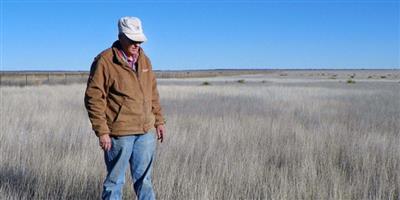The USDA will allow participants in the Conservation Reserve Program to request voluntary termination if they are in the final year of a CRP contract. Participants approved for this one-time, voluntary termination don’t have to repay rental payments.
Farmers can make that request following the end of the primary nesting season for the fiscal year 2022. Producers will then be able to hay, graze, begin land preparation activities and plant a fall-seeded crop before October 1, 2022. For land in colder climates, this flexibility may allow for better establishment of a winter wheat crop or better prepare the land for spring planting.
It’s a flexibility implemented this year to help mitigate the global food supply challenges caused by Russia’s invasion of Ukraine and other factors. “Putin’s unjustified invasion of Ukraine has cut off a critical source of wheat, corn, barley, oilseeds, and cooking oil, and we’ve heard from many producers who want to better understand their options to help respond to global food needs,” says FSA Administrator Zach Ducheneaux. “This announcement will help producers make informed decisions about land use and conservation options.”
FSA is mailing letters to producers with expiring acres that detail this flexibility and share other options, such as re-enrolling sensitive acres in the CRP Continuous signup and considering growing organic crops. Producers will be asked to make the request for voluntary termination in writing through their local USDA Service Center.
Since CRP land typically does not have a recent history of pesticide or herbicide application, USDA is encouraging producers to consider organic production. USDA’s Natural Resources Conservation Service (NRCS) provides technical and financial assistance to help producers plan and implement conservation practices, including those that work well for organic operations, such as pest management and mulching. Meanwhile, FSA offers cost-share for certification costs and other fees.
Participants can also choose to enroll all or part of their expiring acres into the Continuous CRP signup for 2022. Important conservation benefits may still be achieved by re-enrolling sensitive acres such as buffers or wetlands. Expiring water quality practices such as filter strips, grass waterways, and riparian buffers may be eligible to be reenrolled under the Clean Lakes, Estuaries, and Rivers (CLEAR) and CLEAR 30 options under CRP.
Additionally, expiring continuous CRP practices such as shelterbelts, field windbreaks, and other buffer practices may also be re-enrolled to provide benefits for organic farming operations.
If producers are not planning to farm the land from their expiring CRP contract, the Transition Incentives Program (TIP) may also provide them two additional annual rental payments after their contract expires on the condition that they sell or rent their land to a beginning or veteran farmer or rancher or a member of a socially disadvantaged group.
USDA also encourages producers to consider NRCS conservation programs, which help producers integrate conservation on croplands, grazing lands and other agricultural landscapes. EQIP and CSP can help producers plant cover crops, manage nutrients and improve irrigation and grazing systems.
Additionally, the Agricultural Conservation Easement Program (ACEP), or state or private easement programs, may be such an option. In many cases, a combination of approaches can be taken on the same parcel.
For example, riparian areas or other sensitive parts of a parcel may be enrolled in continuous CRP and the remaining land that is returned to farming can participate in CSP or EQIP and may be eligible to receive additional ranking points.
According to USDA, 1.7 million acres of CRP contracts are coming online this year.
###
USDA/NAFB/Senate Ag Committee


